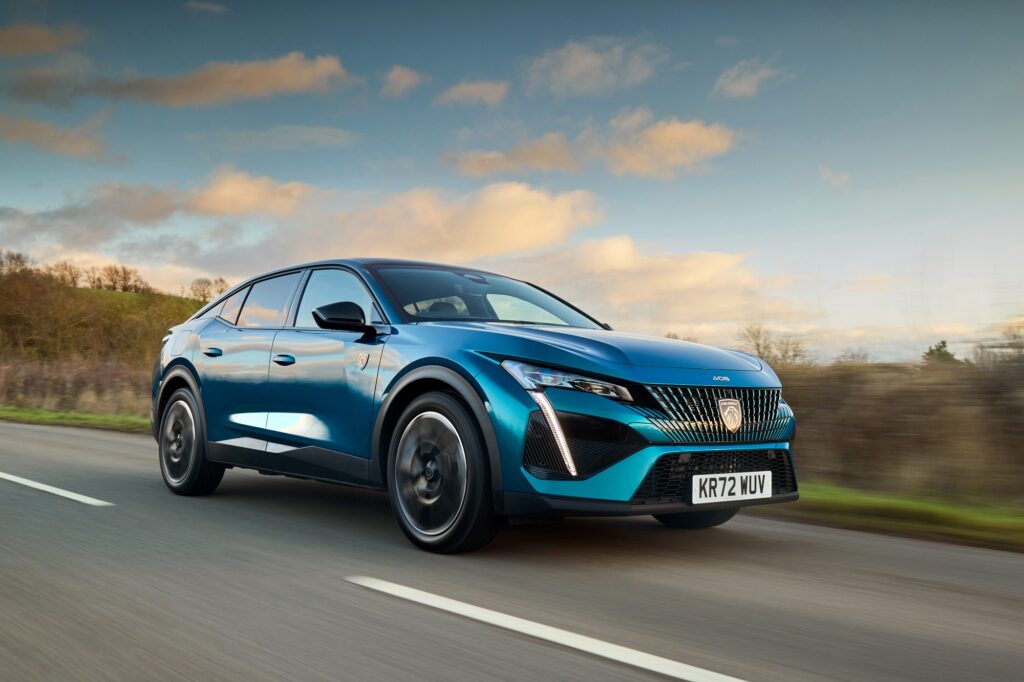UK automotive market continues growth but 2023 forecast weakens
12 April 2023

The UK’s new-car registrations recovery continued for an eighth consecutive month in March. This is according to the latest figures from the Society of Motor Manufacturers and Traders (SMMT).
In total, 287,825 new cars joined the country’s roads last month, an 18.2% increase year on year. Traditionally, March is the strongest month of the year for the UK’s new-car market. The country introduces new registration plates in the month, as well as in September. However, the first new release often proves more popular.
‘March’s new plate month usually sets the tone for the year so this performance will give the industry and consumers greater confidence,’ commented SMMT chief executive Mike Hawes. ‘With eight consecutive months of growth, the automotive industry is recovering, bucking wider trends and supporting economic growth.’
This latest data shows the strongest March since the COVID-19 pandemic began disrupting the UK market in 2020. In the quarter, a total of 494,260 passenger cars were registered, down 29.5% on Q1 2019. According to the SMMT, this still equates to a £2.7 billion (€3 billion) contribution to the UK economy in the first three months of the year.
Promising but not enough
Despite the strong figures, registrations did not meet the forecasted level. This is reflected in the seasonally-adjusted annualised rate (SAAR), which dropped from 2.35 million units in February, to 1.49 million last month.
Therefore, while the UK market is expected to continue its recovery and end the year up on 2022, Autovista Group has revised its forecast to an 11.8% increase, a drop of 3.8% on previous figures, to around 1.8 million new-car registrations.
Just like other regions, the UK is starting to see the market improve following months of issues, especially within the automotive supply chain. Production is picking up as a flow of semiconductors hits the industry, shrinking vehicle waiting times.
This does mean that registration figures are likely to level out as the year continues. This is because those waiting for their vehicles during the supply crisis are now receiving them, meaning the backlog is clearing. With 2022 affected by supply issues, alongside the rising cost of living and the slowing of the COVID-19 pandemic, a true picture of the state of the market remains blurred.
Zero-emission push
Petrol remained the most popular fuel type in the UK. Including mild hybrids, the fuel type took a 56.3% market share, while registrations grew roughly 20%. Diesel fell again, but by a small amount of just 5.3% (including mild hybrids). This indicates that the market could be stabilising following its rapid decline in recent years. Overall, diesel took a market share of 8.3%, meaning vehicles powered by internal-combustion engines (ICEs) only took 64.6% of the market in March.
Battery-electric vehicles (BEVs) saw a record monthly registration high of 46,626. However, the technology’s market share remained roughly the same compared to 2022, at 16.2%. This makes it the UK’s second most popular drivetrain, although it is still struggling to make inroads into the ICE market. Plug-in hybrid (PHEV) registrations grew by 11.8%, although their market share dropped by 0.4%. Hybrid models saw a 34.3% surge in registrations.
Therefore, plug-in vehicles comprised 22.4% of the UK new-car market in March, a decline of 0.3% compared to 2022. In the first quarter, the market share of BEVs and PHEVs dropped 0.7% overall, with all-electric models stabilising at 15.4% and plug-in hybrids dropping to 6.4%. The share of petrol cars increased 0.9% in the quarter, while hybrid vehicles saw a 1.8% rise.
Zero-Emission Mandate
The UK Government has announced a consultation on its Zero-Emission Mandate (ZEM). The ZEM looks to support the rapid shift toward zero-emission vehicles (ZEVs) while providing market certainty for the automotive, infrastructure and energy sectors, as well as their supply chains.
The mandate states that additional research and development into further incremental improvements to ICE efficiency technologies is no longer a key objective. The framework includes a CO2 emissions standard for new non-ZEV cars and vans to ensure they do not become less efficient and more polluting over time.
With the UK banning the sale of new ICE-only cars from 2030, and currently unlikely to follow the EU’s consultation on e-fuel, this means carmakers must push to ensure their fleets are prepared for the changes ahead.
‘Models are coming to market in greater numbers, but consumers will only make the switch if they have the confidence they can charge whenever and wherever they need,’ the SMMT commented. ‘Success of the mandate, therefore, will be dependent not just on product availability but on infrastructure providers investing in the public charging network across the UK.’



